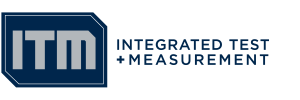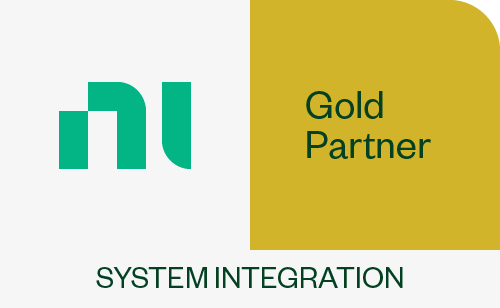
Power Plant on Ohio River
Transforming High-Speed Equipment Data into Cloud-Based Intelligence
How Structural and Industrial Engineers Can Use iTestSystem & AWS for Trending, Diagnostics, and AI-Powered Insights
In today’s demanding industrial environment, structural and industrial engineers must extract meaningful insights from vast amounts of high-speed sensor data. Whether monitoring cranes, engines, off-highway machinery, or processing equipment, converting raw time-series data into actionable intelligence is key to boosting performance, safety, and reliability.
At Integrated Test & Measurement (ITM), we’ve developed a proven solution by combining our iTestSystem software’s Automated Analytics feature with Amazon Web Services (AWS). This pipeline summarizes sensor data, reduces bandwidth requirements, and delivers structured insights to the cloud for advanced analysis, trending, and predictive maintenance using AI.
The Challenge: Big Data, Bigger Bottlenecks
Modern test systems collect high-speed data from a variety of sensors—strain, acceleration, temperature, speed, pressure, and machine data. This can generate gigabytes of time-series data per day. But without a system to summarize and analyze the data, key insights remain buried.
- McKinsey (2023) reports that up to 73% of industrial data goes unused.
- Companies using real-time analytics see up to 30% increased asset utilization and 20% less unplanned downtime.
- The AI in Manufacturing market is projected to grow from $3.2B in 2023 to $20.8B by 2028, driven by data-driven insights [MarketsandMarkets, 2024].
The takeaway? Clean, summarized data is not just helpful—it’s transformational.
The ITM Solution: iTestSystem + AWS Cloud Integration
Using ITM’s iTestSystem and its Automated Analytics feature, engineers can automate the full cycle—from data collection to cloud-based AI analytics.
Step 1: Collect High-Speed Sensor Data
Use iTestSystem to collect high-speed signals from a wide range of sensors:
- Strain gauges (e.g., to monitor fatigue in structures)
- Accelerometers (e.g., to detect vibration signatures)
- Thermocouples (for tracking heat patterns)
- Pressure transducers
- Rotational speed sensors
- Machine data (Vehicle CAN bus systems and PLC signals)
All data is recorded in TDMS (Technical Data Management Streaming) files—ideal for high-fidelity testing.
Step 2: Summarize with Automated Analytics
Automated Analytics enables engineers to apply built-in routines that extract essential metrics automatically, such as:
- Peak, RMS, and standard deviation
- FFT or Power Spectral Density (PSD) for frequency content
- Rate of change, and event counts
- Statistical outlier detection and threshold violations
Only the analyzed values and metrics are stored and sent across the network to streamline processing.
Example: Monitoring a bulldozer’s vibration at 10kHz can be reduced to a 1-minute summary, cutting data size by 80% while maintaining 95% of the analytical value [ITM Blog Post, 2024].
Step 3: Transmit Summarized Data to AWS
Once the data is summarized, iTestSystem’s Automated Analytics Python code integration is then used to:
- Read summary metrics
- Format them for ingestion
- Send them via MQTT (lightweight IIoT protocol) to AWS IoT Core
From AWS IoT Core, data routes securely to:
- Amazon Timestreamfor InfluxDB for time-series analysis
- InfluxDB for real-time visualization and alerts
- Amazon S3 for long-term storage
- Amazon Grafana for dashboards and reports
Step 4: Analyze & Predict with AWS AI Tools
With clean, structured summaries in AWS, engineers can now apply:
- Amazon Lookout for Equipment: AI-driven failure prediction that reduces downtime by up to 30%
- Amazon SageMaker: Build custom ML models without deep data science knowledge
- Amazon QuickSight: Real-time dashboards with sub-second latency
A Nature (2025) study showed that deep learning models like CNNs can improve fault detection accuracy by 25% over traditional statistical models. Convolutional Neural Networks (CNNs) are a class of deep learning models primarily used for processing structured grid-like data, such as images or time-series data.
Real-World Use Cases
- Structural Monitoring: Track fatigue and overload cycles on cranes, bridges, and lifting structures by summarizing strain and acceleration data.
- Process Optimization: Monitor summarized pressure and temperature data from industrial processes to detect performance issues and optimize throughput.
- Heavy Equipment Diagnostics: Log speed, torque, and CAN signal summaries to remotely monitor off-highway vehicles and rotating assets for early signs of failure.
- Material Handling Equipment Monitoring: Capture acceleration, strain, and usage data from forklifts, conveyors, and automated storage systems to improve safety, optimize load distribution, and schedule predictive maintenance.
- Customer Usage Analysis: Summarize field data from equipment in customer hands—such as rental fleets or OEM machinery—to understand real-world usage patterns, detect abuse or misuse, and feed analytics back into product development.
Why Engineers Choose This Method
- Reduces raw data volume
- Enables AI & ML with structured summaries
- Minimizes cloud costs
- Supports early alerts for failure prevention
- Improves team productivity through data automation & availability
How to Get Started
- Install iTestSystem and configure sensor acquisition and TDMS logging.
- Set up Automated Analytics to summarize metrics in real time.
- Integrate iTestSystem’s Automated Analytics Python code integration to format summarized metrics for MQTT pipeline and transmit summaries to AWS IoT Core.
- Use AWS tools (S3, Timestream, InfluxDB, Lookout, Grafana) to analyze and visualize.
- Build custom alerts or AI models for predictive maintenance and performance optimization.
Proven Benefits
- Cost savings: Up to 25% lower maintenance costs [Gartner, 2023]
- Increased uptime: 10–20% improvement with predictive alerts
- Efficiency gains: AI driven process optimization can boost production yield and reduce energy consumption.
- Safety: <300ms anomaly detection latency with AWS-based AI [AWS Case Study, 2024]
Contact Us
Ready to elevate your monitoring system?
Visit the iTestSystem 20.0 page or email chase.petzinger@itestsystem.com to consult with our team.




